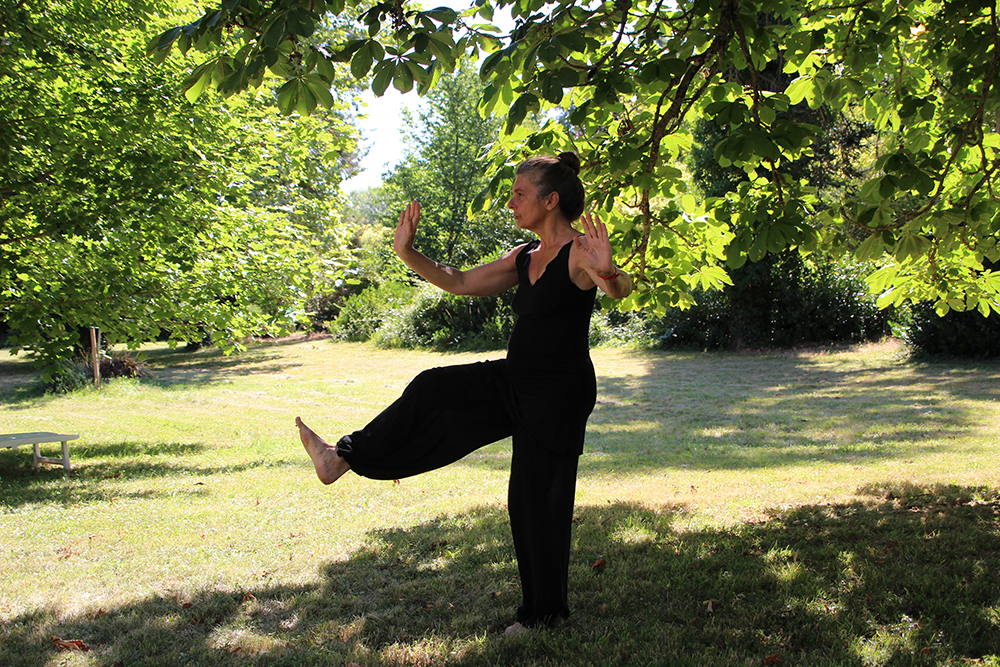
This year, instead of making resolutions that probably won’t stick, and might not serve you anyway (who cares if you drop a dress size!), try a little positivity! Commit to making small changes that help to keep you in a healthy headspace – no matter what life throws at you this year. These tried and tested strategies can help you to get positive and stay positive this year – try giving them a shot! By Sarah Highfield
Focus on accepting yourself
A 2014 study by University of Hertfordshire found that of several “happy habits” – which included things like “giving” and “relating” – the one most strongly linked to life satisfaction was “self-acceptance”. The kicker? It’s also the habit that people tend to practice the least! Researchers theorised that people will prioritise doing things for others (such as helping others or investing in relationships) in order to feel happier, but neglect their own needs.
Mac Ling is a transformational coach and the founder of Coaching Collective, an executive coaching firm based in Hong Kong. He also heads up the Hong Kong chapter of the men’s group, Evryman, focused on helping men with their emotional fitness.
Ling works with his clients to help establish “radical authenticity,” a cognitive practice dedicated to knowing then accepting yourself entirely – the good, the bad, the ugly, even the super weird stuff!

Once someone has done the work of self- acceptance, Ling says, they’re more able to share with the world and feel fulfilled and accomplished in return. This lines up with what researchers have also found, suggesting that if you’re searching for ways to foster more happiness and positivity in your life – the best place to start is by looking in a mirror!
TRY THIS: On a piece of paper, create two sections: one for work, and one for personal life. Divide each section into “pluses” and “minuses” then fill it out according to what you think you do well or like about yourself, as well as things you don’t do well or like about yourself. Look it over and ask yourself: do these negatives take away from all the positives on the page? Is it fair to judge a whole page by just a few minuses, or is it more accurate to look at the whole picture?
Change your perspective

So you’ve practiced some self-acceptance and you’re feeling pretty good, but then something terrible happens and it all goes out the window. Whether you lost your job, endured some heartbreak, or just spilled some coffee on your favourite white shirt, there’s a path to positivity in it. Mac Ling says much of how we approach positivity and negativity is in the framing of our lives.
“Am I sad that I’m unable to take vacations this year?” says Ling. “Sure. But am I also thankful that I’ve been able to take this year of non-travel to really be present for my family? Yes!”
What Ling is referring to is actually a common element in many therapeutic models, like cognitive behavioural therapy. Reframing events, ideas, or emotions in alternative and more positive ways to our initial knee-jerk reaction can help us to accept them more easily as part of life (and we’ve already established how important acceptance is!).
Choosing to view a loss or disappointment as an opportunity for personal growth can be critical to fostering a sense of positivity. But Ling is also careful to caution that this approach doesn’t amount to repressing your emotions entirely.
“While it’s important to feel positive about your life overall, I support the need for us to find solace in the negativity, and to not deny ourselves those feelings. Healthy emotional lives mean experiencing happiness and positivity, and also sadness, anger, fear, and other negative emotions.”
TRY THIS: To reframe a negative experience, first identify it. Write it down in a circle, then ask yourself some questions about it. Things like “Is this entirely accurate?”, “Will this matter in a week?”, or “What would I say to a friend if they expressed this to me?”. Write the answers down in little bubbles linked to the main circle on the page. Once you’ve asked enough questions to give yourself some clarity, visualise a “redemptive narrative”: picture yourself telling the story of how you overcame this adversity and what positive change it produced in you!
Invest in a mind-body practice
For centuries, people have practiced mind-body pursuits like yoga, tai-chi or qigong, which all serve to combine body movement, mental focus and controlled breathing.

Dominique Antiglio is a UK-based practitioner of sophrology, a similar style of self-development technique which combines meditation and breathing techniques with gentle movement and visualisation.
Antiglio says she has noticed a growing public consciousness around the positive effects of mind-body work, hosting workshops for major brands like Lululemon, Soho House and Bamford. Antiglio says a mind-body practice such as sophrology helps her clients to come out of “auto-pilot,”
which promotes more presence, awareness, and ultimately, positivity in their everyday life.
“Sophrology uses a simple combination of short relaxation, breathing, movement and visualisation exercises to support everyone with stress, anxiety, sleep or confidence issues, or to find more balance and positivity in daily life.”

Not all physical activity is created equally, though. While exercise definitely plays a role in happiness, running a 10K or smashing it out at CrossFit skips that useful mindfulness we gain from slower, more meditative pursuits. So while sophrology, or tai chi or qigong for that matter, might not be your bag, it’s worth committing to some form of physical practice that encourages you to slow down, breathe, and appreciate the space your body takes up.
TRY THIS: “The Pump” is a sophrological exercise that helps relax the body by refocusing the mind on feeling sensations, oxygenating the body, and calming the nervous system. Here’s how to do it:
- Stand tall. Exhale through the mouth, then inhale through the nose, and hold your breath.
- Now “pump” your shoulders up and down to get the muscles moving and blood circulating again whilst simply focusing on what you feel in your body.
- When you need to, exhale through the mouth and relax your shoulders, arms and hands and listen again for what you feel in your body.
- Then sit down and take a moment to visualise a positive outcome in your day or your next meeting. This can help refocus your brain towards a more positive state.






